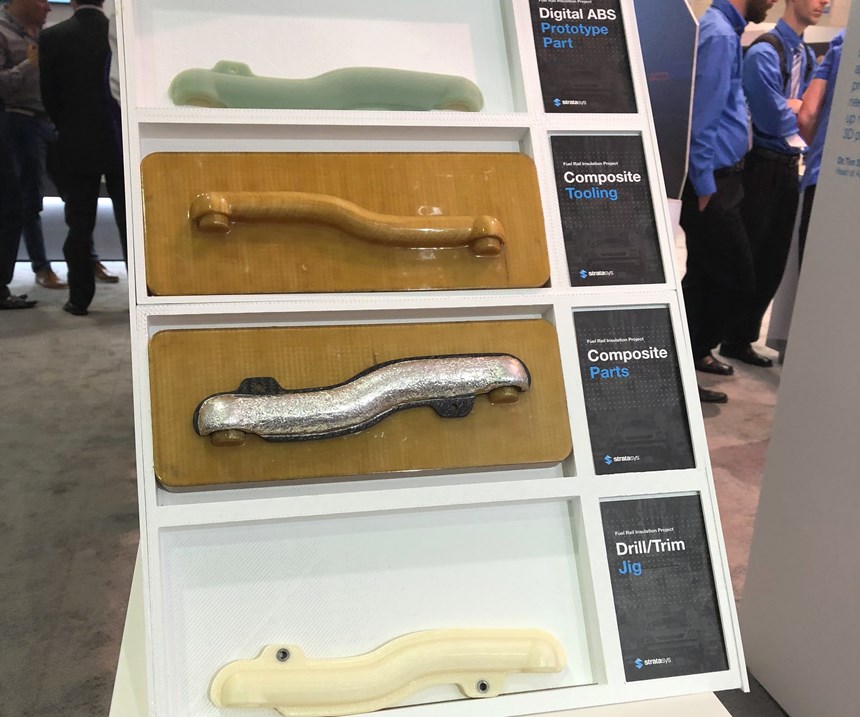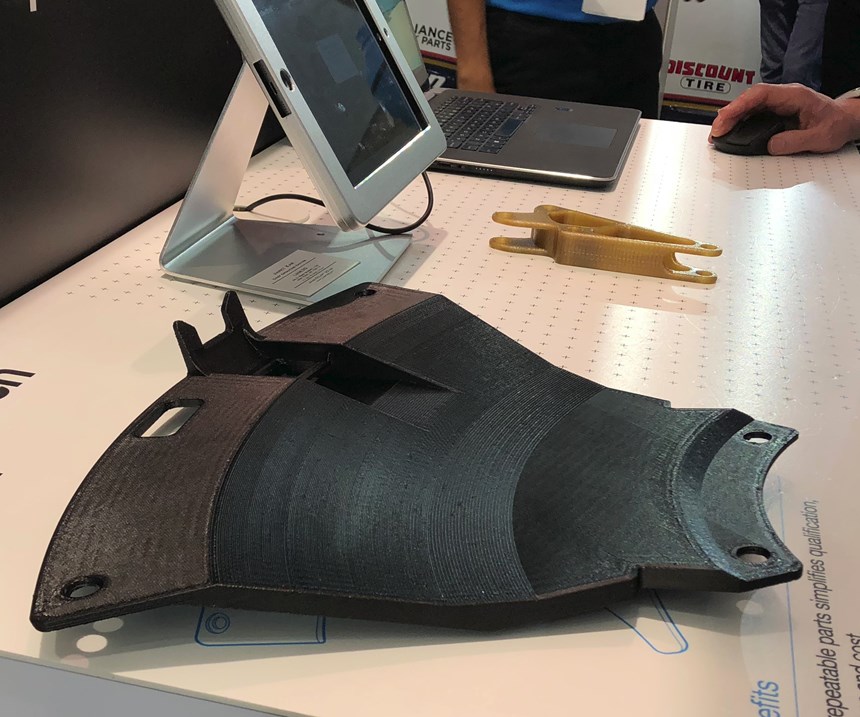Stratasys Reflects on Where 3D Printing Is in 2018
Two years ago, Stratasys was looking forward to where 3D printing might be going. Now, it’s worth evaluating the current state of additive manufacturing with polymers.
Share
Read Next
When I spoke with Scott Sevcik, Stratasys vice president and head of manufacturing solutions, at the International Manufacturing Technology Show (IMTS) this year, I asked him what had changed between this event and its previous edition in 2016.
“Our focus in 2016 was where we are going,” he answered, citing the production demonstrators Stratasys had displayed in its booth in the inaugural AM Pavilion that year. “This year is about where we are now.”
The company’s booth at IMTS 2018 reflected this, with an emphasis on current applications and the ways in which new material and machine options have changed what manufacturers can make today with 3D printing. A few clues about where 3D printing is now:
High-performance applications. A Penske racecar that served as the focal point for the booth was illustrative of the types of demanding, high-performance applications that 3D printing today can support. Stratasys FDM and Polyjet 3D printing technology is used for tooling such as jigs and fixtures, carbon fiber layup molds, and some end-use parts like lightweight mirror housings.
More advanced materials. Many of the high-performance applications for 3D printing today have been driven by material advances. For instance, Stratasys’s recently launched Antero material offers material properties similar to Ultem but with greater chemical resistance. This enables 3D-printed parts to be used not just in the cabin of an aircraft, but near the engine and in other situations where they may come into contact with fluids like fuel or coolant. A variant of this material is even used in external parts for the Orion spacecraft, also on display in the booth.
Specialized 3D printing platforms. As materials advance, it stands to reason that 3D printers may have to change to keep up. Stratasys launched its Fortus 380mc Carbon Fiber Edition, a 3D printer dedicated to its carbon fiber-filled nylon 12 (Nylon 12CF) material. Because the system is optimized to print only this material and one other in a streamlined workflow, it can be offered at a lower price point than other systems in the Fortus line. Although this material is also available for other 3D printers like the Fortus 450, the offering of this specialized system points to a greater interplay and understanding between machine and material.
More like traditional manufacturing, at least in terms of how companies are thinking about equipment integration. Developments such as support for the MTConnect protocol in the most recent Fortus 900 Production 3D printers point to a desire by users to treat their additive equipment like they might any other machine on the shop floor. Issues such as quality and statistical process control are top of mind as manufacturers increasingly seek certifications for 3D-printed parts and workflows.
There’s still plenty of ground to cover in machines and materials as well as design, productivity and workforce training. But according to Sevcik, what this snapshot of 3D printing in 2018 highlights is that “We’re past the hype bubble.”
Related Content
-
This Drone Bird with 3D Printed Parts Mimics a Peregrine Falcon: The Cool Parts Show #66
The Drone Bird Company has developed aircraft that mimic birds of prey to scare off problem birds. The drones feature 3D printed fuselages made by Parts on Demand from ALM materials.
-
How Large-Format 3D Printing Supports Micro-Scale Hydropower
There is potential hydroelectric power that has never been unlocked because of the difficulty in capturing it. At Cadens, additive manufacturing is the key to customizing micro-scale water turbine systems to generate electricity from smaller dams and waterways.
-
AM 101: Digital Light Synthesis (DLS)
Digital Light Synthesis (DLS) is the name for Carbon's resin-based 3D printing process. How it works and how it differs from stereolithography.

.jpg;width=70;height=70;mode=crop)












.png;maxWidth=300;quality=90)




